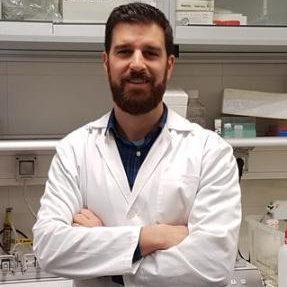Molecular Mechanisms and Pathophysiology of Cardiovascular Disease
A special issue of International Journal of Molecular Sciences (ISSN 1422-0067). This special issue belongs to the section "Molecular Biology".
Deadline for manuscript submissions: closed (31 July 2022) | Viewed by 48899
Special Issue Editors
Interests: proteomics; precision medicine; biomarkers; cardiology and aging
Special Issue Information
Dear Colleagues,
A Special Issue on the topic of “Molecular Mechanisms and Pathophysiology of Cardiovascular Disease” is being prepared for the journal IJMS (Impact Factor 4.556 2020 Journal Citation Reports®).
Even in the 21st century, cardiovascular diseases (CVD) remain a significant health issue worldwide. As early as in 2001, these diseases were recognized as the largest single cause of mortality on the planet. Today, despite the huge growth of pathophysiology knowledge and advances in molecular mechanisms, prognosis, diagnosis, and treatment, CVD remain at the world’s top rank of all human death causes. In fact, the impact of CVD is growing and has reached pandemic proportions, mainly due to the great incidence of obesity in the global population. This Special Issue focuses on molecular mechanisms (vascular calcification, endothelial dysfunction, inflammation, oxidative stress, etc.) (endothelial cells, macrophages, vSMCs, platelets, cardiac myocytes, and extracellular vesicles) and pathophysiology of CVD contributing to better understanding their development, providing insights to guide designing future, more personalized, medicine.
We warmly welcome submissions, including original papers and reviews, on this widely discussed topic.
Dr. Maria Gonzalez Barderas
Dr. Fernando de la Cuesta
Guest Editors
Manuscript Submission Information
Manuscripts should be submitted online at www.mdpi.com by registering and logging in to this website. Once you are registered, click here to go to the submission form. Manuscripts can be submitted until the deadline. All submissions that pass pre-check are peer-reviewed. Accepted papers will be published continuously in the journal (as soon as accepted) and will be listed together on the special issue website. Research articles, review articles as well as short communications are invited. For planned papers, a title and short abstract (about 100 words) can be sent to the Editorial Office for announcement on this website.
Submitted manuscripts should not have been published previously, nor be under consideration for publication elsewhere (except conference proceedings papers). All manuscripts are thoroughly refereed through a single-blind peer-review process. A guide for authors and other relevant information for submission of manuscripts is available on the Instructions for Authors page. International Journal of Molecular Sciences is an international peer-reviewed open access semimonthly journal published by MDPI.
Please visit the Instructions for Authors page before submitting a manuscript. There is an Article Processing Charge (APC) for publication in this open access journal. For details about the APC please see here. Submitted papers should be well formatted and use good English. Authors may use MDPI's English editing service prior to publication or during author revisions.
Keywords
- cardiovascular disease
- molecular mechanisms
- cardiovascular pathophysiology
- inflammation
- endothelial dysfunction
- molecular markers
Benefits of Publishing in a Special Issue
- Ease of navigation: Grouping papers by topic helps scholars navigate broad scope journals more efficiently.
- Greater discoverability: Special Issues support the reach and impact of scientific research. Articles in Special Issues are more discoverable and cited more frequently.
- Expansion of research network: Special Issues facilitate connections among authors, fostering scientific collaborations.
- External promotion: Articles in Special Issues are often promoted through the journal's social media, increasing their visibility.
- e-Book format: Special Issues with more than 10 articles can be published as dedicated e-books, ensuring wide and rapid dissemination.
Further information on MDPI's Special Issue polices can be found here.







